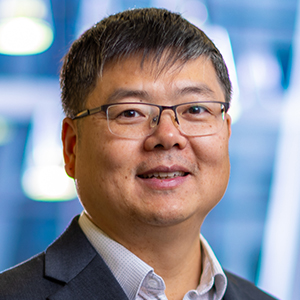AI has become an increasingly powerful technology force that promises to impact all aspects of our society. But the diverse layers of software abstractions, hardware heterogeneity, and data privacy concerns have made the development of optimized AI solutions extremely challenging. This results in the business world’s expensive investment only on a handful of selective and “profitable” AI solutions, leaving many critical societal needs, such as education and sustainability, much less addressed than deserved.
For example, nearly 3.4 million children in the U.S. require speech and language services under the Individuals with Disabilities Education Act (IDEA) and are at risk of falling behind in their academic and social-emotional development without timely intervention by Speech and Language Pathologists (SLPs). Unfortunately, there is a significant shortage of SLPs and the COVID pandemic has further exacerbated this gap, making it almost impossible for SLPs to provide individualized services for children.

Jinjun Xiong,
University at Buffalo
Through the recently established National AI Institute for Exceptional Education, we envision a transformative approach to address this challenge. We aim to develop advanced AI technologies to scale SLPs’ availability and services. Towards this end, we propose to develop two novel AI solutions: (1) AI Screener to enable universal early screening for all children, and (2) AI Orchestrator to work with SLPs and teachers to provide individualized interventions for children with their formal Individualized Educational Plan (IEP). In developing these solutions, we will advance foundational AI technologies, enhance our understanding of children’s speech and language development, serve as a nexus point for all special education stakeholders, and represent a fundamental paradigm shift in how SLPs serve children in need of ability-based speech and language services.
In this talk, I will discuss the rationale behind the Institute’s vision, the technical approaches we are taking, and the corresponding research challenges we must overcome. I will contextualize these efforts in an ultimate research goal of transforming the current AI innovation ecosystem to truly democratize AI for a better society. This also opens up new opportunities for collaboration with a broad research community in areas of foundational AI, workload acceleration, system characterization and optimization, and AI automation.
Dr. Jinjun Xiong is Empire Innovation Professor with the Department of Computer Science and Engineering at University at Buffalo (UB). He also serves as the Scientific Director for the $20 M National AI Institute for Exceptional Education, the AI lead for the $10 M IES Center for Early Literacy and Responsible AI, and Director for the SUNY-UB Institute for Artificial Intelligence and Data Science. Prior to that, he was a Senior Researcher and Program Director for AI and Hybrid Clouds Systems at the IBM Thomas J. Watson Research Center. He was the former co-founder and co-director for the IBM-Illinois Center for Cognitive Computing Systems Research (C3SR), the success of which in 5 years has led to the 10-year $200M expansion of the center to the IBM-Illinois Discovery Accelerator Institute.
His research interests are on across-stack AI systems research, including AI applications, algorithms, tooling, and computer architectures. Many of his research results have been adopted in IBM’s products and tools. He published more than 160 peer-reviewed papers in top AI conferences and systems conferences. His publication won 9 Best Paper Awards and 10 Nominations for Best Paper Awards. He also won top awards from various international competitions, including the championship award for the IEEE GraphChallenge on accelerating sparse neural networks in 2020, and the First Place Awards for the 2019 DAC Systems Design Contest on designing an object detection neural network for edge FPGA and GPU devices, respectively.